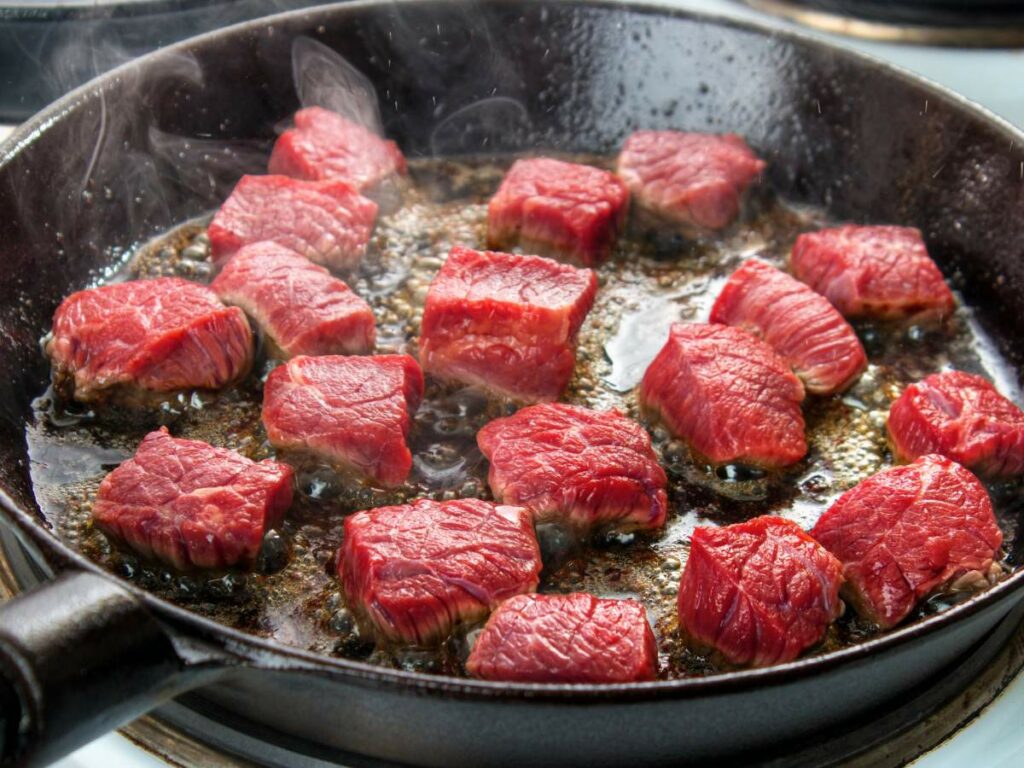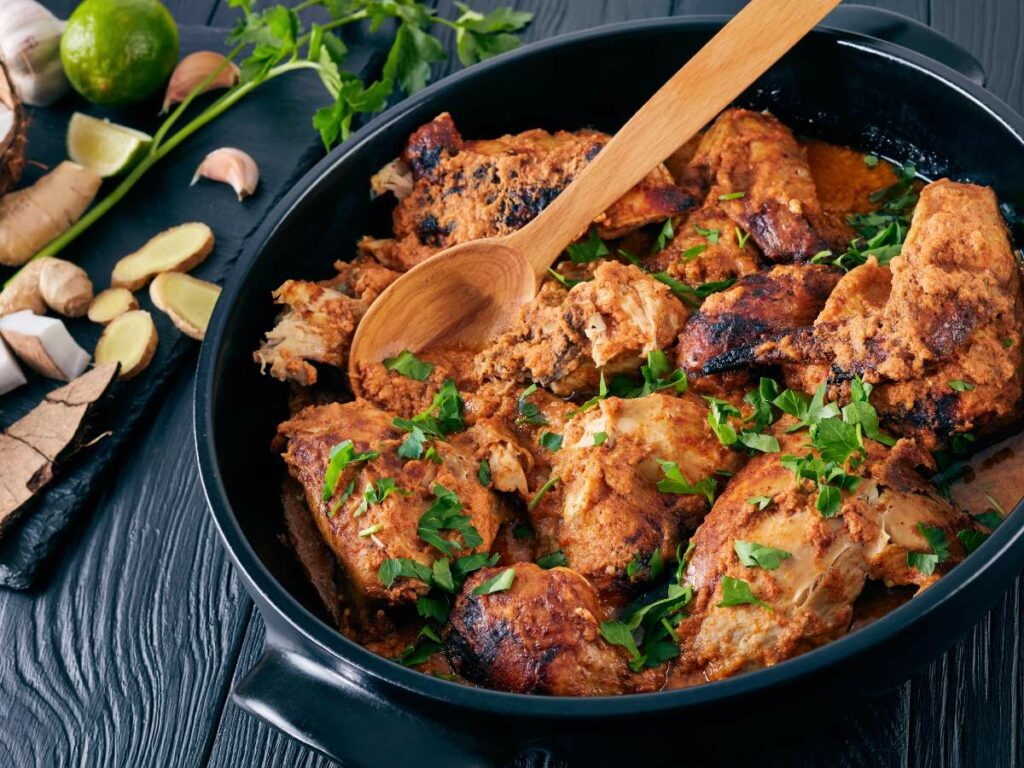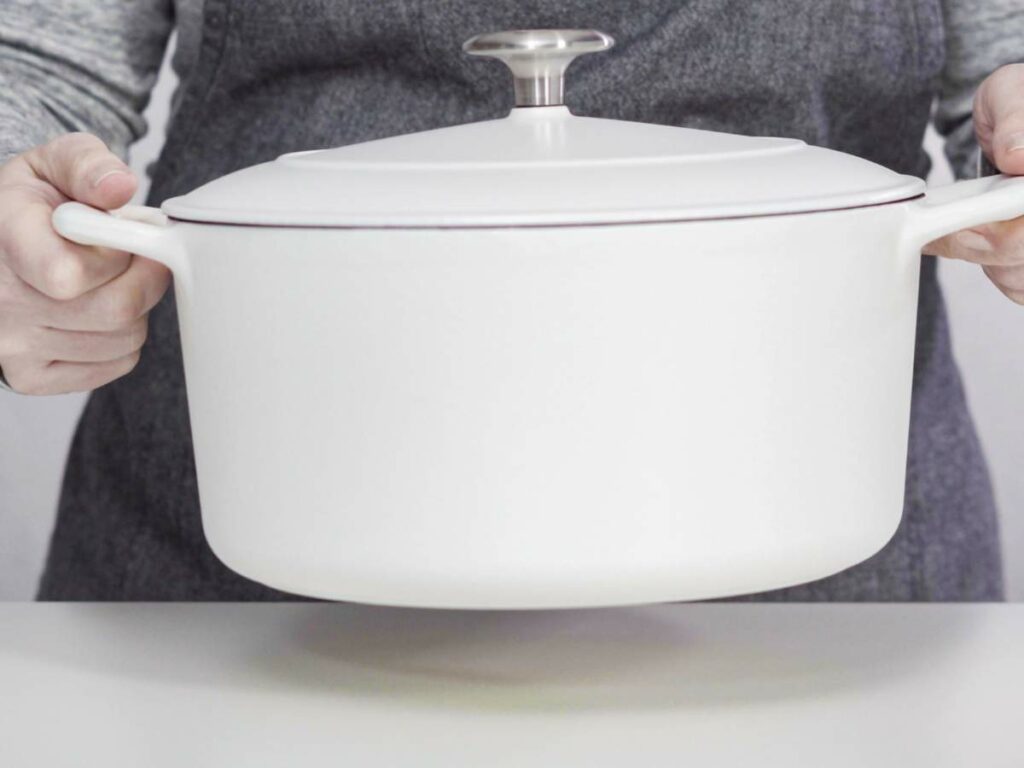Braising is a cooking technique that makes tough meats and veggies super tender. You sear them quickly at high heat, then cook them slowly in a covered pot with liquid at a low temperature. It’s easy to learn, and the result is delicious food with deep, rich flavors.
The Braising Process

Braising has two main steps: searing and slow cooking.
1. Searing
- Heat oil in a heavy pot until it’s hot but not smoking.
- Sear the meat or veggies until they’re browned on all sides. This creates a yummy crust and develops complex flavors through the Maillard reaction.
2. Adding Liquid and Aromatics
- Once it’s seared, add liquid like broth, water, wine, or beer. This also deglazes the pan, turning the brown bits at the bottom into a flavorful sauce.
- Add aromatics like onions, garlic, carrots, celery, and herbs.
- Bring the liquid to a simmer and cover the pot tightly.
3. Slow Cooking
- Put the covered pot in the oven or keep it simmering on the stovetop.
- Cook for at least 3 hours to tenderize tough meat and develop flavors.
- Use a thermometer to make sure the temperature stays even.
- Check the meat after 3 hours. If it’s not tender enough, cook it longer. Tough cuts like shank, shoulder, round, brisket, and plate usually take longer.
- Chicken usually takes 35-45 minutes, and fish only takes 10-15 minutes.
4. Finishing Touches
- Once it’s done, the meat will be tender, and the flavors will be blended.
- You can thicken the sauce into a gravy if you want.
- Add fresh herbs or a squeeze of lemon for extra flavor.
“When we get our steer processed, one of the cuts our butcher gives us is braising steak. While it’s considered a lower-quality meat, we enjoy it just as much as a filet or ribeye steak. During the cold months, we braise it on our wood stove for 3 to 4 hours in a bone broth with herbs and veggies.” — Dan Morris, Fire and Saw
Braising vs. Stewing

Both braising and stewing use slow cooking to make food tender. The main differences are:
- Liquid: Braising uses a small amount of liquid, while stewing uses more, completely covering the food.
- Size of ingredients: Braising is for larger pieces of meat, while stewing is for smaller, uniform pieces.
- Texture: Braising keeps the meat’s shape, while stewing breaks it down more into a thick sauce.
Braising vs. Slow Cooking
Both make food tender, but they differ in:
- Time: Slow cooking takes longer because it uses a lower temperature.
- Liquid: Slow cooking uses more liquid to keep the food from drying out.
- Texture: Slow-cooked food is often mushier because it doesn’t usually involve searing.

Equipment needed
You need a heavy pot or pan with a tight-fitting lid. Cast iron or enameled cast iron are great because they distribute heat evenly.
- Cast iron Dutch oven: A great all-around choice.
- Enameled cast iron: Like cast iron, but with a non-stick coating that’s good for acidic foods.
- Braising pan (braiser): Shallower than a Dutch oven with a wider base, good for browning larger cuts of meat.
Classic Braising Recipes
Braising is used all over the world. Here are some examples:
- Braised cabbage: A simple, healthy, and comforting dish.
- Pot roast: Chuck roast braised with veggies in beef broth until it falls apart.
- Coq au vin: French chicken stew with red wine, mushrooms, bacon, and onions.
- Korean galbi jjim: Sweet and savory braised short ribs.
- Moroccan tagine: Lamb braised with dried fruits, spices, and nuts.
- Braised organ meats: Braising is great for tougher organ meats like heart and liver, making them tender and flavorful.
Benefits of Braising
- Intensifies flavors: Braising brings out the flavors of the ingredients and blends them together.
- Tenderizes tough cuts: Makes cheap cuts of meat fork-tender.
- Makes veggies tender: Keeps veggies from getting mushy.
- Versatile: You can use it for lots of different foods and cuisines.
Braising is a fantastic way to make tough, cheap ingredients taste amazing. With a little patience, you’ll create delicious, flavorful meals that everyone will love!



